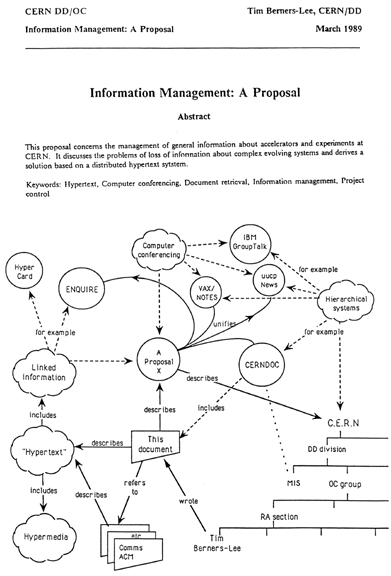Strategic Investments in BigTime

On October 3, Runa Capital invested in its first startup outside the CIS - the American company BigTime Software, Inc. , a leading manufacturer of cloud software to increase the productivity of professional services firms.
There is no doubt that BigTime is the future leader in the market for business administration software. For this, the company has two serious trump cards. Firstly, one of the investors and advisory board members of the company is the famous John S. Howell, who created Solomon Software in 1980, which in turn created the most famous ERP system in history - Solomon for Windows. In 2001, Microsoft bought the company, and Solomon was named Microsoft Dynamics SL, which does not require a presentation. Secondly, BigTime architecture was initially built with close integration with QuickBooks, an Intuit accounting system that accounts for 94% of the US market.
But more important is the importance of the entire industry of “management automation”. Administration solutions are the most important element in any project, the larger the business, the more important the administrative component in it. And when managing really large projects, their administration becomes the main element of success.
I think the Egyptian pyramids can serve as a good analogy.

They are more than they seem.
One glance at them is enough to assess the complexity of the work, and it is clear that cutting blocks, delivering them and laying them in a certain place is a matter of technology, even without construction machines. But to organize such construction, manage it and bring it to the end is a serious task even for modern managers. I’m afraid that without computers and databases, no one will even take up such work.
Another example is the skyscrapers of New York. An ideal office building - a great view, a prestigious building, cheap rent, and even in the very center. Why did they start to build them so late? Few people know that their secret is in brilliant management. In principle, similar steel structures were mastered at the end of the 19th century (the Eiffel Tower), but their construction required a large construction area - mainly under the warehouse of steel beams from which the frame structures were mounted. Naturally, the cost of renting such an area in the center of cramped Manhattan for the whole year made the whole undertaking with cheap offices unprofitable.

Monument to the industrial era.
But the skyscrapers became a symbol of the power of America, as soon as they managed to solve the problem of management of their construction. Firstly, the workers on the site were grouped into units trained for the utmost coordination of work - if one worker did not go on the shift, they removed the entire team. Secondly, all the work was divided into several simple operations, measured by a bell blow (each brigade has its own), installation teams were reinforced by the Mohawk Indians who were not afraid of heights (they could not descend at all).
And finally, the delivery of beams was scheduled by the minute - they were smelted at a factory in Pittsburgh, carried 605 kilometers along the roads to the construction site and immediately mounted. Moreover, the process went immediately in three or four streams, and for a simple or delayed truck in just one minute the bonuses were deprived of the whole brigade.

And why the Indians do not have lunch?
Imagine how detailed the management of all the links of this enterprise should be, so that the Pittsburgh blast furnaces and the Indians-installers work in the same rhythm with (beat less than a minute). As a result, the success of Empire State Building was so great that the work of the offices in it never stopped. Even when a ten-ton B-25 flew into the 80th floor due to fog at full speed in 1945, the fire was extinguished in just half an hour and the offices continued their work.
But all these are examples from the industrial era, when the information flow of even large projects was relatively small to be processed using paper tables and disk telephones. This good old time ended in 1954 with the creation of the European Center for Nuclear Research (CERN) near Geneva, which became a symbol of technological progress of the twentieth century. To date, it has consistently built six accelerators, each was several times more complicated than the previous one and required more and more administrative resources for construction and management.

The installation of the CSM detector resembles the finale of the World Tetris Championship.
At CERN, most of the discoveries in physics of the twentieth century were made, many of them had historical significance. For example, for the discovery of the W- and Z-bosons, two CERN employees were awarded the Nobel Prize in 1984. This discovery had an important side effect for history: efforts to improve the organization of accelerators led eventually to the creation of the World Wide Web - WWW. For which, in 2004, Elizabeth II promoted Tim Berners-Lee, mentioned in a previous post, to the rank of Knight Commander of the Order of the British Empire, thereby giving him the prefix “sir” to the name and the right to add the abbreviation KBE after the signature (the cavalier is the second by seniority rank in the Order).

On the right is the person who created the Internet.
By the end of the 80s at CERN, the problem of joint processing of information by large groups of people, often moving from place to place, was especially acute.
First, experiments were conducted by teams of hundreds of scientists from different countries.
Secondly, the effective energy of particle collisions increased, the events in the accelerators counted for microseconds, while the complexity of reconstructing particle collisions also increased.
Thirdly, superconducting magnets have begun to be used on accelerators, requiring frequent replacement and repair. In a swamp of constantly changing relationships between individual modules, teams of specialists, etc. could easily get bogged down.
Important achievements in the development of information technology were made in 1980 and 1989 - in preparation for the launch of the two penultimate colliders. The ENQUIRE program, written in 1980 by T. Berners-Lee, was a model of the system of interconnections between different devices in the form of hypertext and, importantly, it allowed to quickly track all changes.

The boss’s visa on Tim’s proposal: “Vague, but interesting.”
The program came in handy in 1984 when it was commissioned to provide real-time access to research results. It’s hard for today's user, accustomed to web services, to realize that the file system with hyperlinks within the local network, reproducing the system of connections between different devices, was a remarkable achievement a quarter of a century ago.
Only in 1989, in the year of the launch of the Large Electron-Positron Collider, Berners-Lee proposed a project of distributed hypertext systems. But most of his colleagues did not see the potential in his “startup” - I think that most of them simply did not understand his intricate structure.
During the year, Berners-Lee revised his project, making a brilliant addition to it. He decides to use hypertext not only inside the pages, but also in the addressing of sites - this is how the system of Universal Resource Locator, or simply “URL”, was born. We use it every time we type the name of the site in the address bar of the browser and get directly to the server we need, without even knowing its ip address.

And the boss was right.
The improved proposal, which was eventually adopted in 1990, belongs to T. Berners-Lee and R. Cayo. The idea of implementing hypertext on the Internet was non-trivial, its significance was not immediately recognized - even in CERN, it took 10 years to bear it! This is despite the fact that people have been using the Internet since 1978 (e-mail appeared at CERN in 1980), and the implementation of hypertext on computers has been developing since the 1960s, the word “hypertext” was invented by Ted Nelson back in 1965.
08/06/1991 the first web-system appeared in the library of CERN programs. It included a web browser, general information about the WWW project and instructions for creating your own web server. Before Christmas 1991, T. Berners-Lee, R. Cayo, J.-P. Groff and B. Pollermann started the Internet era as we know it, announcing in their historical letter that you just need to type the telnet command to download the WWW browser info.cern.ch.
In 1991, several web servers appeared in Europe; the first server outside Europe appeared in California at the Stanford Linear Accelerator Center in December 1991. Well, then you know.
- November 1992 - there are 26 servers in the world;
- October 1993 - 200;
- December 1993 - 500;
- November 1994 - 10,000;
- December 2005 - 50,000,000;

LHC consumes about 10% of the total annual energy consumption of the canton of Geneva. In the photo is the central computer LHC.
In December 1993, WWW occupied 1% of Internet traffic. The web went beyond CERN in 1994: by the end of the year, the number of users exceeded 10 million. Today, there are more than two billion of them. In just three years, a new kind of sites appeared, allowing visitors to leave comments and in a special way connected among themselves. So blogs appeared, of which there are now more than 160 million.
There were of course fatal errors. “In fact, if you think about it, it turns out that a double slash in the URL is not needed. If I created it again, I would have done without it, ”Tim admitted at a symposium on future technologies in Washington in 2009. In addition, Berners-Lee regrets the amount of paper and ink for the printer, which over the years had to spend on printing an unnecessary icon.
The success of the WWW-project directed financial flows to the development of the Internet. It was WWW that made the Internet a commercial and public domain, turning it from a means of communication among geek scientists to a global information field. Now the very words WWW, Internet and Computer have become almost synonymous.
If Runa Capital existed in 1980, we certainly invested in the seemingly insane startup Tim Berners-Lee. Just because we perfectly understand the prospects of information management systems. But now is 2011, and we are investing our knowledge and knowledge in the BigTime management system, made in full accordance with the spirit of the work of Internet pioneers.
By the way, Sir Berners-Lee is now working on a UK e-government project, and even started a twitter . Let's hope that old Tim is not offended by the way we ordered his offspring, and he will not go too far with the new government, otherwise you never know: I

like it, man?
